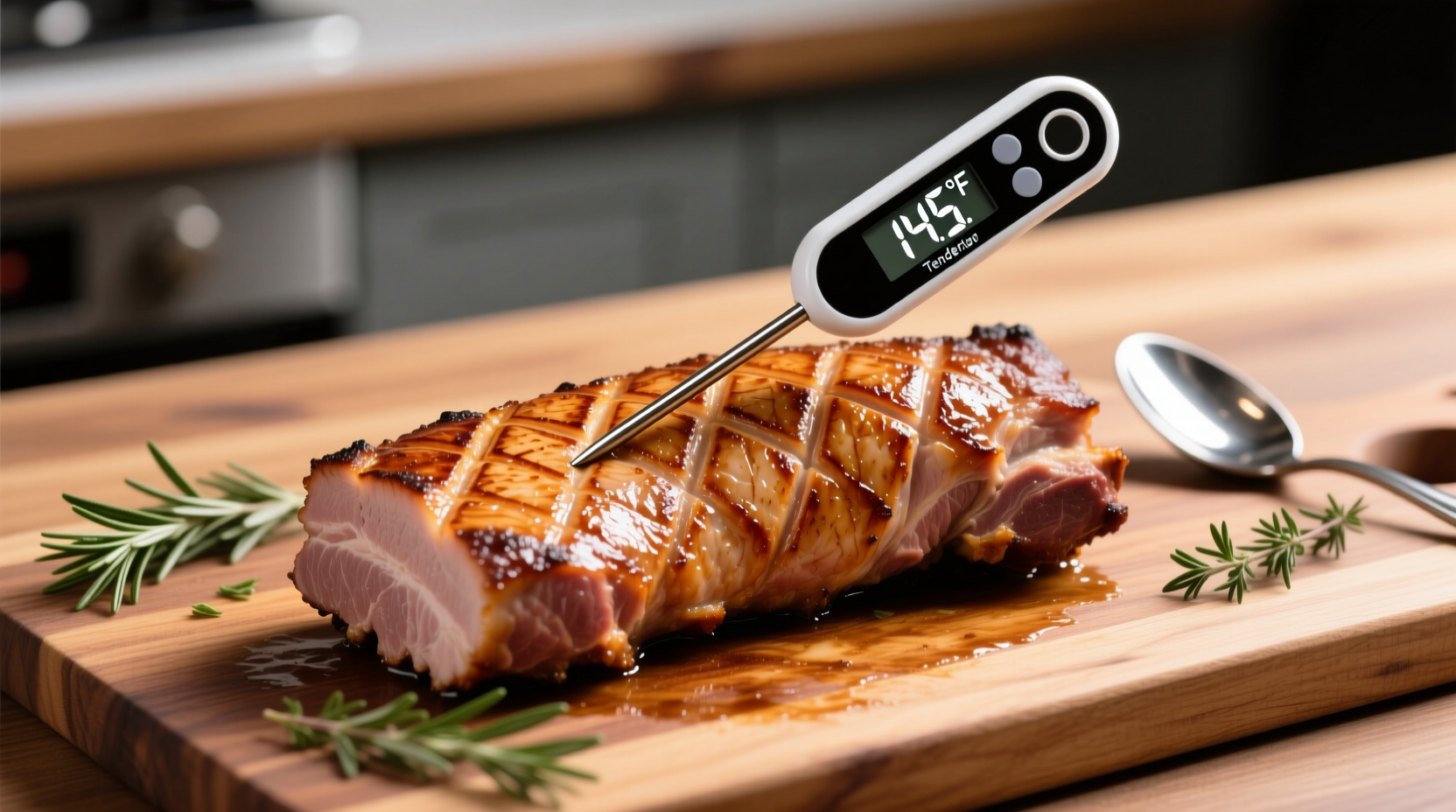The perfect internal temperature for pork tenderloin is 145°F (63°C), followed by a 3-minute rest period. This precise temperature ensures food safety while maintaining the tender, juicy texture that makes pork tenderloin a favorite cut. Cooking to this exact temperature eliminates harmful bacteria without drying out the meat, delivering restaurant-quality results every time.
For home cooks and culinary enthusiasts, knowing the exact temperature for pork tenderloin isn't just about following rules—it's the key to transforming an expensive cut of meat into a perfectly cooked masterpiece. Gone are the days of dry, overcooked pork; modern food science has refined our understanding of safe cooking temperatures, allowing you to enjoy pork that's both safe and succulent.
Why 145°F Is the Magic Number for Pork Tenderloin
Understanding the science behind pork cooking temperatures helps you become a more confident cook. The USDA's Food Safety and Inspection Service (FSIS) updated its pork temperature guidelines in 2011 based on extensive research into food safety and meat science. This change reflected improved understanding of pathogens in pork and how heat affects both safety and texture.
When pork reaches 145°F internally, it has been exposed to sufficient heat to destroy Trichinella spiralis and other potential pathogens, while still preserving the delicate muscle fibers that give tenderloin its prized tenderness. The subsequent 3-minute rest period allows residual heat to continue the cooking process slightly while letting juices redistribute throughout the meat.
| Pork Cooking Stage | Internal Temperature | Visual Characteristics |
|---|---|---|
| Rare | 120-125°F (49-52°C) | Deep red, very juicy |
| Medium Rare | 130-135°F (54-57°C) | Pink center, very juicy |
| Perfect Tenderloin | 145°F (63°C) | Light pink center, juicy |
| Well Done | 160°F+ (71°C+) | Gray throughout, dry |
How Pork Temperature Recommendations Have Evolved
Historically, pork was cooked to much higher temperatures out of concern for trichinosis, a parasitic disease. However, modern farming practices have virtually eliminated this risk in commercially raised pork. The National Pork Board worked with the USDA to update guidelines based on comprehensive food safety research.
According to the USDA Food Safety and Inspection Service, the shift from 160°F to 145°F represents a science-based approach that balances safety with quality. This change aligns with recommendations from food safety authorities worldwide, including the Canadian Food Inspection Agency and the European Food Safety Authority.
Choosing and Using the Right Thermometer
Accurate temperature measurement is non-negotiable for perfect pork tenderloin. Here's what matters:
- Digital instant-read thermometers provide the most accurate readings in 3-5 seconds
- Insert the probe into the thickest part of the meat, avoiding bone or fat pockets
- Take multiple readings in different spots to ensure even cooking
- Calibrate your thermometer regularly using ice water (32°F/0°C) or boiling water (212°F/100°C)
Remember that temperature continues to rise 5-10 degrees during resting (called carryover cooking), so remove your pork from heat when it reaches 140°F to achieve the perfect 145°F final temperature.
Cooking Methods and Temperature Considerations
Different cooking techniques require slight temperature adjustments to achieve perfect results:
- Grilling: Remove pork at 140°F as grill temperatures can cause rapid carryover cooking
- Oven roasting: Pull at 142°F since oven environments create more consistent carryover
- Sous vide: Cook at precisely 140°F for 1-4 hours, then sear to reach 145°F
- Pan-searing: Check temperature frequently as direct heat can cause quick temperature spikes

Why Color Alone Isn't a Reliable Doneness Indicator
Many home cooks mistakenly believe pork must be completely white to be safe. This misconception leads to overcooked, dry meat. The pink color in properly cooked pork comes from myoglobin, not blood, and is perfectly normal at 145°F.
According to research published by the USDA Agricultural Research Service, factors like pH levels, cooking method, and even the pig's diet can affect pork's color regardless of temperature. Relying on color rather than an accurate thermometer risks either undercooking or overcooking your meat.
Avoiding Common Temperature Mistakes
Even experienced cooks make these temperature-related errors:
- Not resting the meat: Skipping the 3-minute rest causes juices to spill out when cutting
- Checking too frequently: Opening the oven or grill repeatedly extends cooking time
- Incorrect probe placement: Measuring near bone or fat gives false readings
- Using oven temperature as proxy: Oven dials are often inaccurate; always measure the meat itself
Food Safety and Leftovers
Proper temperature management continues after cooking. Refrigerate leftovers within 2 hours (1 hour if room temperature exceeds 90°F). When reheating, bring pork tenderloin back to 165°F for safety. For meal prepping, slice cooked pork into portions before refrigerating to ensure rapid, even cooling.
Perfect Pork Every Time: A Simple Temperature Guide
Follow these steps for foolproof pork tenderloin:
- Bring pork to room temperature (30-60 minutes)
- Season and sear if desired
- Cook until thermometer reads 140°F in thickest part
- Remove from heat source and tent loosely with foil
- Rest for 3 minutes (temperature will rise to 145°F)
- Slice against the grain and serve
This method works whether you're using a conventional oven, grill, air fryer, or stovetop. The key is monitoring the internal temperature rather than relying on cooking time alone, as thickness and cooking equipment vary significantly.











 浙公网安备
33010002000092号
浙公网安备
33010002000092号 浙B2-20120091-4
浙B2-20120091-4